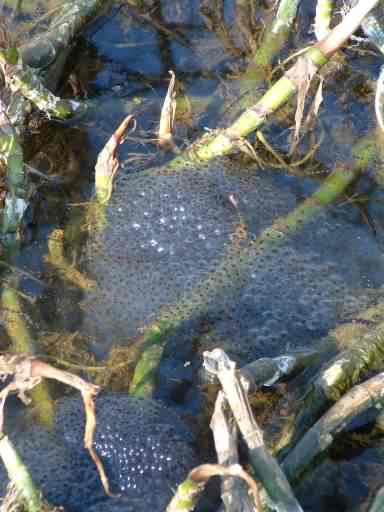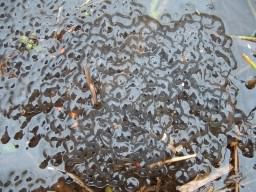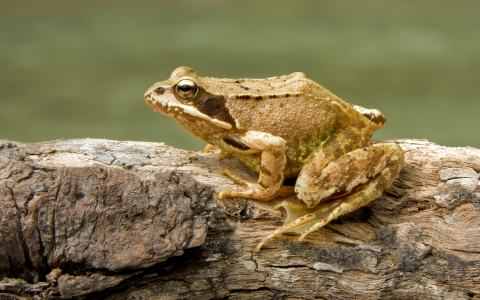

Photos above and left ©2004–

Photo ©2008 Richard Bartz
Click any photo for a larger image
Common Frog - Rana temporaria
Family - Ranidae
Also known as - European Grass Frog
An abundant semi–aquatic amphibian species found over most of Europe, living in gardens, woods and any damp moist areas, size up to 10cm (4in). They are a light brown to olive green colour with dark stripes on the legs and lower abdomen and a dark brown stripe from behind the eyes to the front legs. Breeding pairs form about March when they can be heard calling if not disturbed. Somewhere between 1000 to 3000 eggs are laid in clumps in shallow water with tadpoles hatching about a month later. The tadpoles metamorphose about two to three months later into terrestrial juveniles leaving the water soon after to live on dry land in moist areas, returning to the water in October to hibernate over the winter.
Young frogs hibernate on land in their early years. A nocturnal species they feed on worms, insects, spiders and slugs. Often confused with the Common Toad – Bufo bufo, they can easily be distinguished as Toads walk and have a warty skin, whereas Frogs hop and have a damp smooth skin. Frog spawn is laid in clumps and toad spawn is laid in long strings. Males are smaller than females and have hard swellings or "nuptial pads" on the first digits of the forelegs, which are used for clasping females during mating, called "amplexus".
 |
 Photos above and left ©2004– |
 Photo ©2008 Richard Bartz |
Click any photo for a larger image | ||
Site design ©1999– Brickfields Country Park - Privacy -